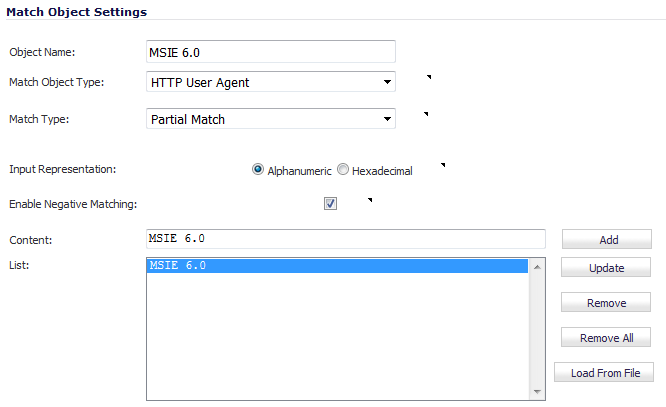You can also use Application Control to protect your Web servers from undesirable browsers. Application Control supplies match object types for Netscape, MSIE, Firefox, Safari, and Chrome. You can define a match object using one of these types, and reference it in a policy to block that browser.
You can also access browser version information by using an HTTP User Agent match object type. For example, older versions of various browsers can be susceptible to security problems. Using Application Control, you can create a policy that denies access by any problematic browser, such as Internet Explorer. You can also use negative matching to exclude all browsers except the one(s) you want. For example, you might want to allow Internet Explorer version 6 only, due to flaws in version 5, and because you haven’t tested version 7. To do this, you would use a network protocol analyzer such as Wireshark to determine the Web browser identifier for IEv6, which is MSIE 6.0. Then you could create a match object of type HTTP User Agent, with content MSIE 6.0 and enable negative matching.

You can use this match object in a policy to block browsers that are not MSIE 6.0. For information about using Wireshark to find a Web browser identifier, see Wireshark. For information about negative matching, see Negative Matching.
Another example of a use case for controlling Web browser access is a small e-commerce site that is selling discounted goods that are salvaged from an overseas source. If the terms of their agreement with the supplier is that they cannot sell to citizens of the source nation, they could configure Application Control to block access by the in-country versions of the major Web browsers.
Application Control supports a pre-defined selection of well-known browsers, and you can add others as custom match objects. Browser blocking is based on the HTTP User Agent reported by the browser. Your custom match object must contain content specific enough to identify the browser without creating false positives. You can use Wireshark or another network protocol analyzer to obtain a unique signature for the desired browser.
